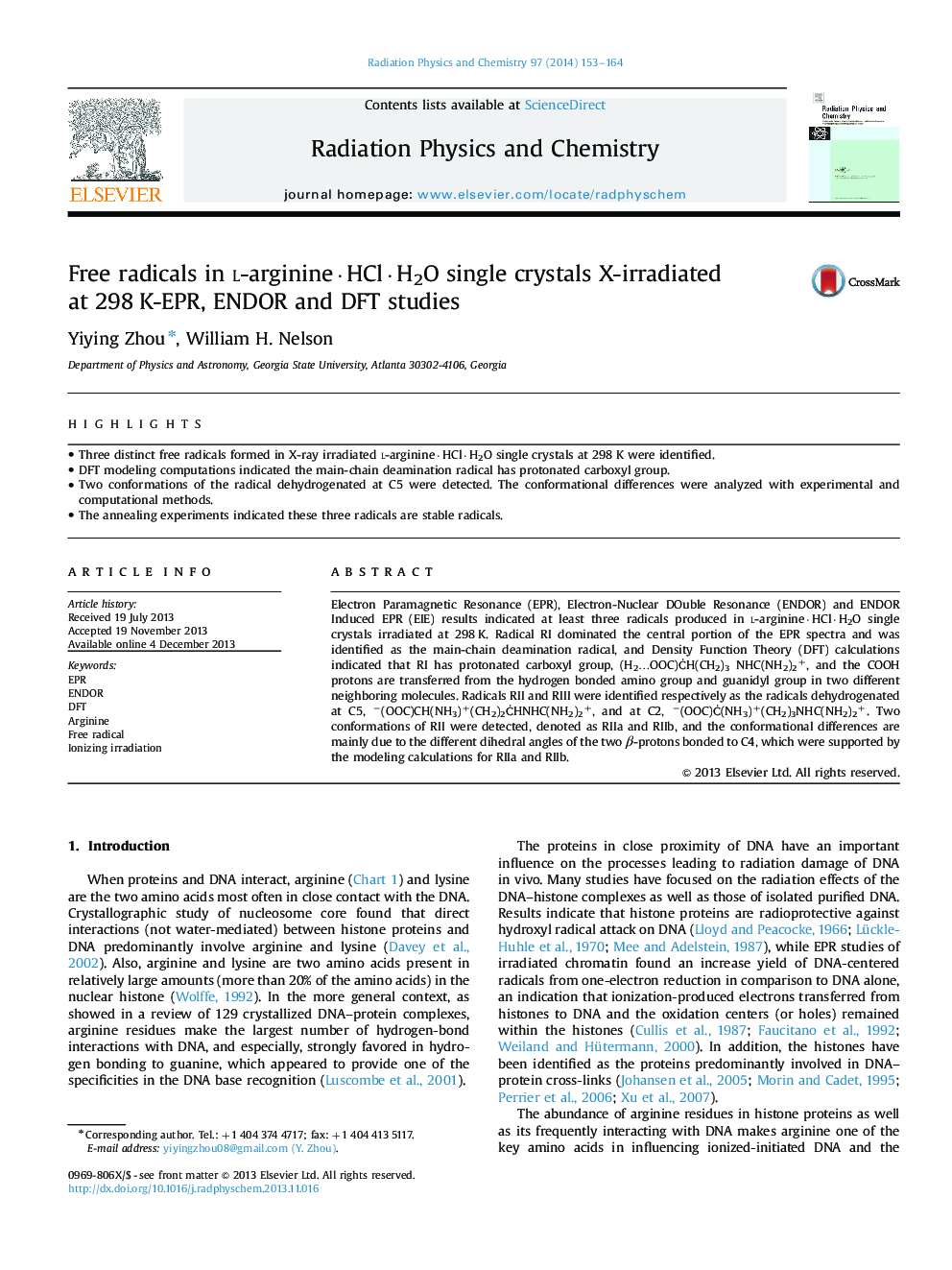| Article ID | Journal | Published Year | Pages | File Type |
|---|---|---|---|---|
| 1886164 | Radiation Physics and Chemistry | 2014 | 12 Pages |
•Three distinct free radicals formed in X-ray irradiated l-arginine·HCl·H2O single crystals at 298 K were identified.•DFT modeling computations indicated the main-chain deamination radical has protonated carboxyl group.•Two conformations of the radical dehydrogenated at C5 were detected. The conformational differences were analyzed with experimental and computational methods.•The annealing experiments indicated these three radicals are stable radicals.
Electron Paramagnetic Resonance (EPR), Electron-Nuclear DOuble Resonance (ENDOR) and ENDOR Induced EPR (EIE) results indicated at least three radicals produced in l-arginine·HCl·H2O single crystals irradiated at 298 K. Radical RI dominated the central portion of the EPR spectra and was identified as the main-chain deamination radical, and Density Function Theory (DFT) calculations indicated that RI has protonated carboxyl group, (H2…OOC)ĊH(CH2)3 NHC(NH2)2+, and the COOH protons are transferred from the hydrogen bonded amino group and guanidyl group in two different neighboring molecules. Radicals RII and RIII were identified respectively as the radicals dehydrogenated at C5, −(OOC)CH(NH3)+(CH2)2ĊHNHC(NH2)2+, and at C2, −(OOC)Ċ(NH3)+(CH2)3NHC(NH2)2+. Two conformations of RII were detected, denoted as RIIa and RIIb, and the conformational differences are mainly due to the different dihedral angles of the two β-protons bonded to C4, which were supported by the modeling calculations for RIIa and RIIb.
